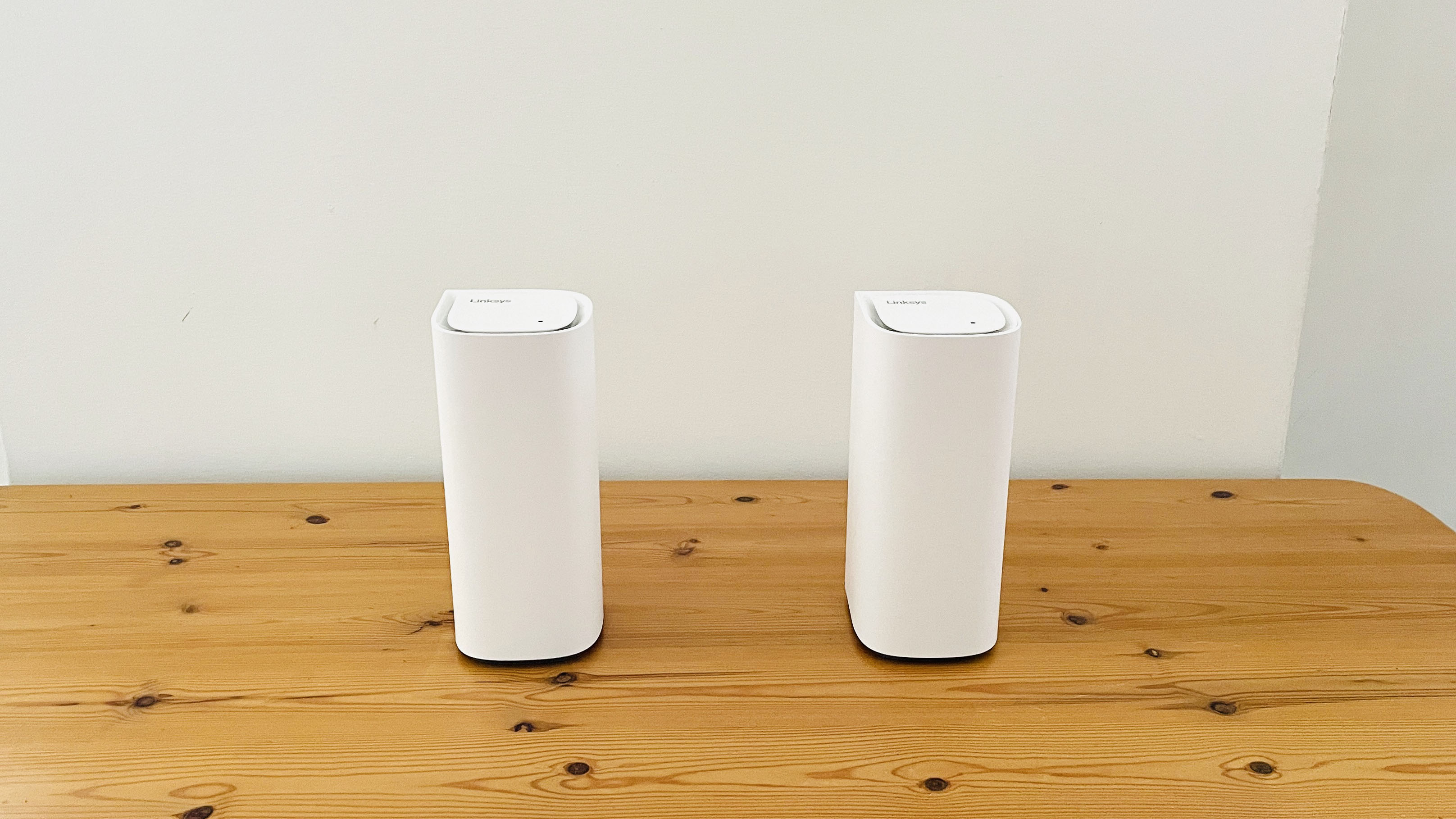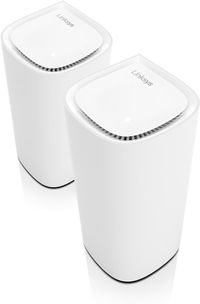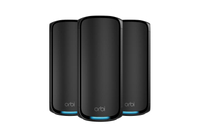TechRadar Verdict
The Linksys app is a little temperamental, with some features still in ‘beta,’ but the Velop Pro 7 provides impressive Wi-Fi 7 performance at the most competitive price we’ve seen so far. Its Wi-Fi speed is twice as fast as the previous Velop with Wi-Fi 6E, and it provides better wired connectivity too.
Pros
- +
Fast, tri-band Wi-Fi 7
- +
Cheaper than most of its rivals
- +
Good wired connectivity
Cons
- -
App has some rough edges
- -
Few devices currently support Wi-Fi 7
- -
Parental controls are still beta
Why you can trust TechRadar
Linksys Velop Pro 7: One-Minute Review
Linksys originally announced the new Wi-Fi 7 version of its Velop Pro mesh system back in October 2023, but the final technical details of the Wi-Fi 7 standard weren’t actually ironed out until the official announcement at CES earlier this year.
So, like several other Wi-Fi 7 products, it’s taken a little while for the Velop Pro 7 router to actually go on sale. It’s a welcome arrival, though, as while the Velop Pro 7 isn’t exactly cheap, it’s considerably less expensive than some of the other Wi-Fi 7 mesh systems and routers that we’ve seen so far - ushering in some hope that Wi-Fi 7 is starting to become a little more affordable for ordinary home users.
It’s not a top-of-the-range Wi-Fi 7 system, mind, offering tri-band Wi-Fi with a top speed of just over 10Gbps. That’s actually fairly mid-range for the blazing fast Wi-Fi 7 standard, but it’s still more than fast enough to cope with most domestic broadband services and tasks such as online gaming or streaming 4K video.
Wi-Fi 7 is also backward-compatible with older PCs and mobile devices that use Wi-Fi 5 or 6, so you don’t have to worry about compatibility problems if you decide to upgrade with a Wi-Fi 7 system such as the Velop Pro 7. And, as we’ve seen with previous Velop systems, you can buy either one, two or three Velop mesh routers to suit the size of your home.
Linksys Velop Pro 7: Price And Availability
- How much does it cost? $699.99 / £749.99 (around AU$1,060)
- When is it available? Now
- Where can you get it? Available in the US and UK
Each Velop router unit can cover an area of around 3,000 square feet, so people in smaller homes will probably find that a single router meets their needs perfectly well for a price of £399.99 / $349.99 (around AU$530).
However, the two-piece system that we tested costs £749.99 / $699.99 (around AU$1060), and there’s a three-device option also available for £999.99 / $899.9 (around AU$1,365). The Velop Pro 7 is currently available in the US and UK, although – as we’ve seen with other Wi-Fi 7 products – poor old Australia seems to be a bit of a Wi-Fi deadspot, having only recently caught up with last-gen Wi-Fi 6E.
That’s still fairly expensive, of course, but the Velop Pro 7 is only around half the price of rival Wi-Fi 7 mesh systems such as Netgear’s extravagantly expensive Orbi 970, which costs a hefty £1,499.99 / $1,699.99 (around AU$2,600) for a similar two-piece system - and a whopping £2,199.99 / $2,299.99 (around AU$3,475) for a three-piece system.
- Value: 4 / 5
Linksys Velop Pro 7: Design
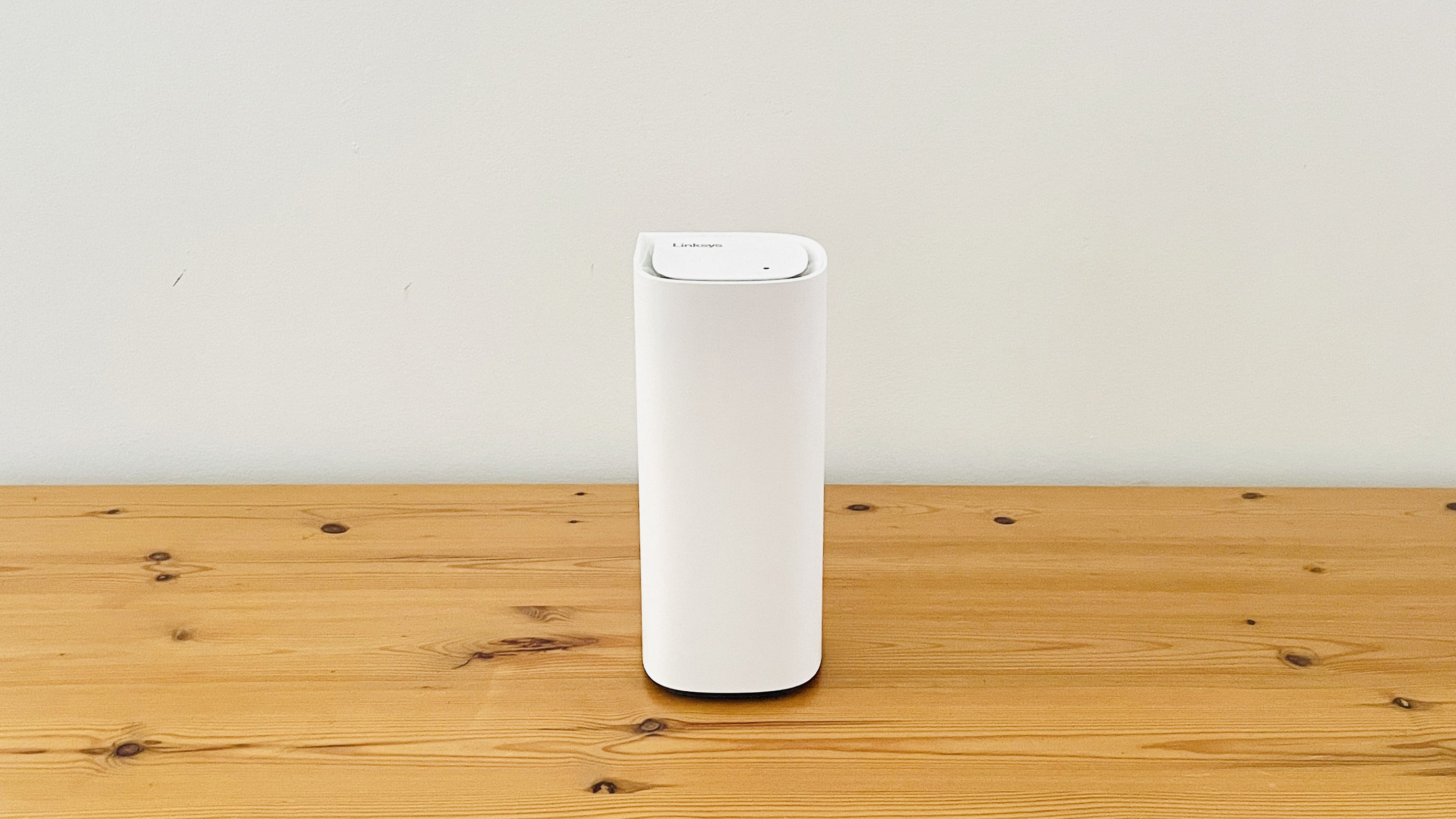
- Slim, compact design
- Lots of Ethernet ports
- Available with one, two or three routers
The design of the Velop Pro 7 will be familiar from previous Velop models, with each router consisting of a slim white tower, topped off with the Velop’s trademark tapered ‘teardrop’ shape on the top panel.
The router devices are slim and light enough to fit easily onto a shelf or table – although the height of each unit, at 221mm, means they’ll need a bit of headroom if you want to place them on a bookshelf or something similar.
Wi-Fi: Tri-band Wi-Fi 7 (2.4GHz/5.0GHz/6.0GHz)
Wi-Fi Speed: 10.7Gbps
Ports (per router): 1 x 2.5Gb Ethernet (WAN), 4 x Gigabit Ethernet (LAN)
Processor: Qualcomm 1.5GHz, quad-core
Memory: 1GB SDRAM
Storage: Unspecified
Dimensions: 221 x 95 x 95mm, 0.95kg / 2lbs
The Velop routers are identical, so you can connect one of them to your existing router to use your broadband connection, and then place the other router(s) further away to extend the mesh network right across your home or office.
But while the Velop Pro 7 routers look very similar to previous models there are some significant differences. The Velop Pro 6E that we reviewed recently only included two Gigabit Ethernet ports on each router, with one required for the connection to your existing router and only the second port available to provide a wired connection.
In contrast, the Velop Pro 7 routers all have five Ethernet ports – a 2.5G port for a high-speed Internet connection (WAN) and four Gigabit Ethernet ports to provide wired connections for devices such as a games console or laptop.
There are no USB ports, though, which would allow you to connect a hard drive or other storage device to your network, but that’s not likely to be a deal-breaker for most users.
It’s a little odd, though, that Linksys avoids any mention of the Velop’s speed on its website, preferring to simply state that Wi-Fi 7 is a lot faster than Wi-Fi 6 (gosh, really?). After a little digging, we found a reference to a speed of ‘over 10Gbps’ before eventually locating a datasheet that specified a speed of 10,680Mbps (or 10.68Gbps).
- Design: 4 / 5
Linksys Velop Pro 7: Features
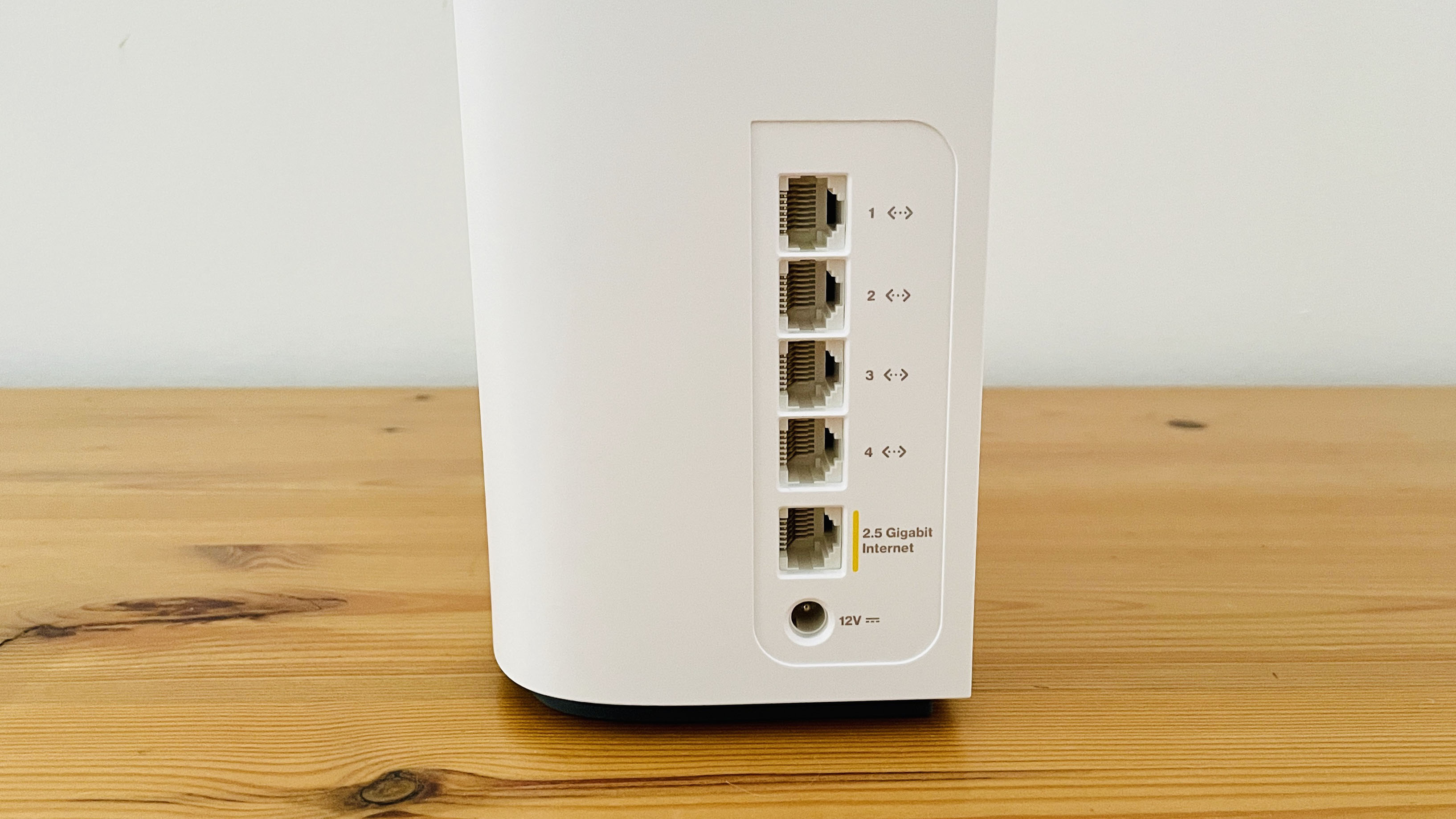
- Tri-band Wi-Fi 7
- App feels a little unfinished
- Parental controls are still in beta
As mentioned, the Velop Pro 7 provides tri-band Wi-Fi 7, using the 2.4GHz, 5.0GHz and 6.0GHz frequency bands, which will be more than fast enough to cope with most home and office broadband connections.
Getting started is fairly straightforward, although the process is a little cumbersome at times. There’s a QR code printed on the base of each router, but this didn’t allow us to automatically connect to the Velop network, as is the case with many rival mesh systems.
Instead, we had to write down the network name and password that were printed on the base of the router and enter these by hand, before subsequently changing the network details and creating a new name and password of our choosing.
You also have to start the setup process with the two Velop routers placed close to each other while you create your new network, and then move the second router – referred to as a ‘node’ - to another location once that’s done. And, oddly, the app told us several times that we had no internet connection - even though we were already streaming the BBC News channel on an iPad using the Velop network.
The app continues to be something of a mixed bag later on, as well. It creates a single network that combines the three frequency bands, which does keep things simple for new users - but more advanced users might prefer to have greater control over the network settings.
The app does include features such as a guest network, and the option to create a schedule to control your children’s internet access. However, the parental controls are a work in progress, with the app’s ‘Safe Browsing’ mode still being labeled as ‘beta’. This provides content filters that can block unsuitable material, although this feature isn’t clearly explained in the app. Furthermore, at present it seems to block content for all devices on your network, rather than allowing you to create different profiles and settings for children of different ages.
- Features: 3.5 / 5
Linksys Velop Pro 7: Performance
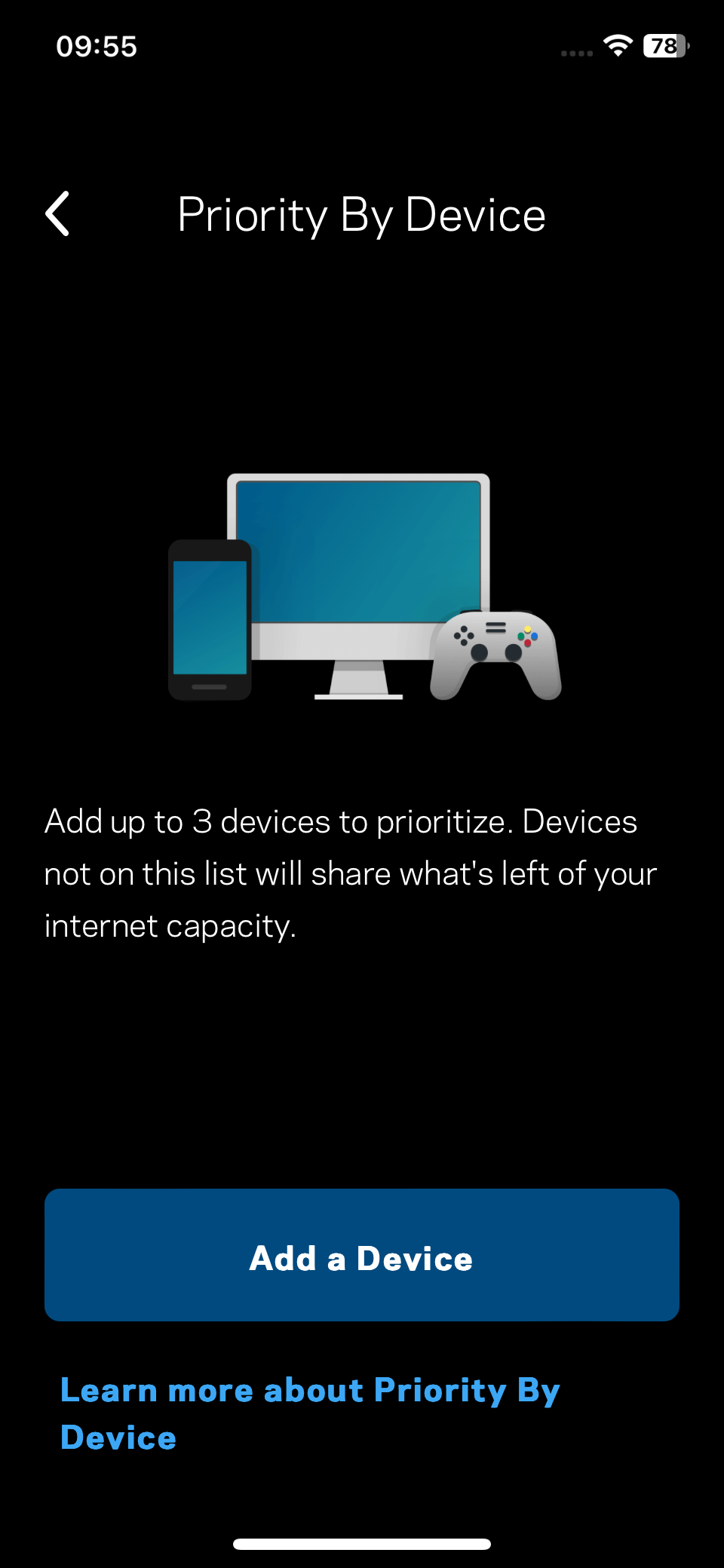

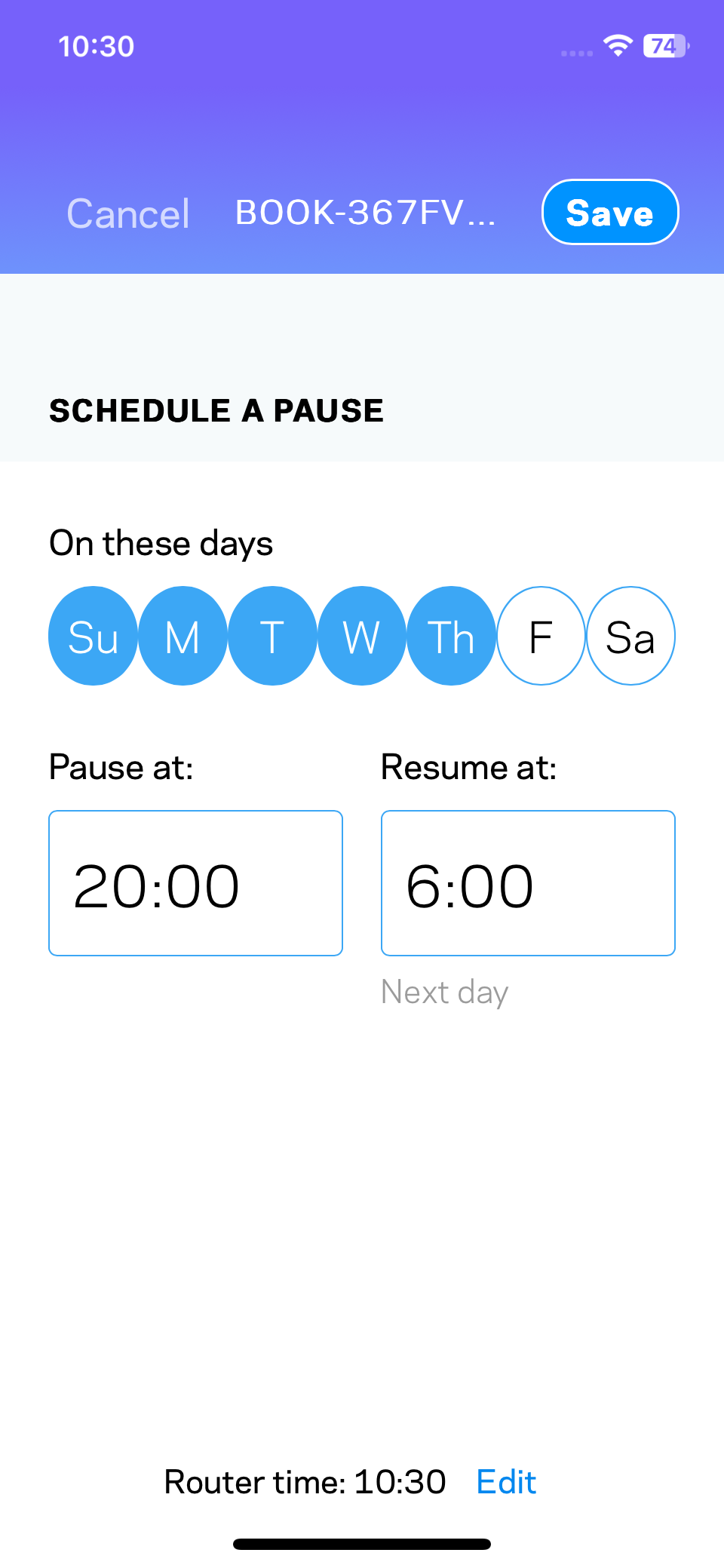
- Top speed of 10.68Gbps
- Good performance and range
- Zaps through walls and other barriers
The Linksys app may be a little rough around the edges, but we didn’t have any complaints about the performance of the Velop Pro 7.
Our aging office router can’t even handle the full 150Mbps provided by our broadband connection, and even devices that are in the same room rarely get more than 100Mbps for either Steam downloads or the Ookla speed test. We also have a room at the back of the building that our office router can barely reach at all, forcing us to rely on Powerline adaptors to provide a wired connection for our office computers in that room.
Ookla Speed Test - Single merged network (download/upload)
Within 5ft, no obstructions: 150Mbps / 150Mbps
Within 30ft, three partition walls: 150Mbps / 150Mbps
20GB Steam Download - Single merged network
Within 5ft, no obstructions: 150Mbps
Within 30ft, three partition walls: 150Mbps
Therefore, we set up the Velop Pro 7 with the first Velop unit connected to our normal office router, and the second Velop ‘node’ placed in a hallway just adjacent to that tricky Wi-Fi deadspot in the back office.
Unsurprisingly, the Velop easily hit 150Mbps for both Steam downloads and the Ookla speed test when connecting to devices in the same room. And, more importantly, the Velop’s far-reaching network didn’t bat an eyelid as we picked up our laptop and wandered along the corridor to that back office, continuing to maintain a speed of 150Mbps the whole time.
- Performance: 5 / 5
Should You Buy The Velop Pro 7?

Buy the Linksys Velop Pro 7 if...
You’re An Early Adopter
It’s still early days for this new technology, but PCs, laptops and mobile devices that support Wi-Fi 7 are already starting to appear, so upgrading to a Wi-Fi 7 router or mesh system is a good way of future-proofing your home or office network.
You Have A Large Home
You can buy a single Velop Pro 7 router on its own, but it’s really intended as a mesh system that uses two or more routers to cover a wider area, up to 6,000 square feet or more.
Don’t buy it if...
You’re On A Budget
The Velop Pro 7 is one of the most affordable Wi-Fi 7 systems we’ve seen, but it’s still pretty expensive. Most domestic broadband services just don’t need the sheer speed of Wi-Fi 7, so most of us can stick with more affordable routers that use Wi-Fi 6 or 6E.
You Only Have A Couple Of Bedrooms
Mesh systems like this are very much designed for larger homes and offices. If you only have a small family home, or share an apartment with friends, then a single, conventional router will be all you really need.
Velop Pro 7: Scorecard
| Attributes | Notes | Score |
|---|---|---|
| Value | Wi-Fi 7 is still expensive and new, but the Velop Pro 7 manages to provide strong performance at a more competitive price than most of its rivals. | 4 / 5 |
| Design | A smart, streamlined design is backed up by lots of Ethernet ports to provide wired connections for PCs and other devices. | 4 / 5 |
| Features | Some of the controls are still in beta but they work well enough in the app. | 3.5 / 5 |
| Performance | Linksys app could use a little more time to bake, but even this mid-range Wi-Fi 7 system can blow most older routers out of the water. | 5 / 5 |
| Final Score | Wi-Fi 7 isn’t an essential upgrade just yet, but the Velop Pro 7 is the most affordable option we’ve seen so far. | 4 / 5 |
Velop Pro 7: Also Consider
| Row 0 - Cell 0 | Linksys Velop Pro 7 | Netgear Orbi 970 | Linksys Velop Pro 6E |
| Price (as reviewed) | £749.99 / $699.99 / AU$1,060 | £2,199.99 / $2,299.99 / AU$3,475 | £499.99 / $449.99 / AU$700 |
| Wi-Fi | Tri-band Wi-Fi 7 | Quad-band Wi-Fi 7 | Dual-band Wi-Fi 6E |
| Wi-Fi Speed | 10.68Gbps | 27Gbps | 5.4Gbps |
| Connectivity | Per Router = 1x 2.5Gb Ethernet (WAN), 4x Gigabit Ethernet (LAN) | Router = 1x 10Gb Ethernet (WAN), 1x 10Gigabit Ethernet (LAN), 4x 2.5 Gigabit Ethernet (LAN) Satellite = 1x 10Gigabit Ethernet (LAN), 2x 2.5 Gigabit Ethernet (LAN) | 1x Gigabit Ethernet (WAN), 1x Gigabit Ethernet (LAN) |
| Processor | Qualcomm quad-core, 1.5GHz | Broadcom quad-core, 2.2GHz | Qualcomm dual-core, 1.0GHz |
| Memory | 1GB | 2GB | 512MB |
| Storage | Not Specified | 4GB Flash | Not Specified |
| Dimensions | 221 x 95 x 95mm | 294 x 144 x 132mm | 194 x 95 x 99mm |
Linksys Velop Pro 6E
The previous generation of Velop Pro routers only supports Wi-Fi 6E with a top speed of 5.4Gbps, but it’s still fast enough for most homes and a lot less expensive. It doesn’t have a lot of Ethernet ports, though.
Netgear Orbi 970
The current reigning heavyweight of Wi-Fi 7 mesh systems, Netgear’s Orbi 970 offers top-of-the-range performance with quad-band Wi-Fi and a previously unheard-of speed of 27Gbps. It’s really expensive, though, and Netgear has a bit of a cheek with its additional subscriptions.
- First reviewed: May 2024
Cliff Joseph is a former Editor of MacUser magazine, and a freelance technology writer with 30 year’s experience in the industry (and old enough to remember when Apple was close to going bust…).
His first job involved using Macs for magazine sub-editing and typesetting, which led to the realisation that these computer-thingies might actually turn out to be useful after all. After a few years specialising in the Mac side of the market, he went freelance and embraced the wide world of digital technology, including Windows PCs, digital audio and hi-fi, and networking. Somewhere along the line he also developed a bit of a gaming habit and has stubbornly waved the flag for Mac gaming for far too many years.
